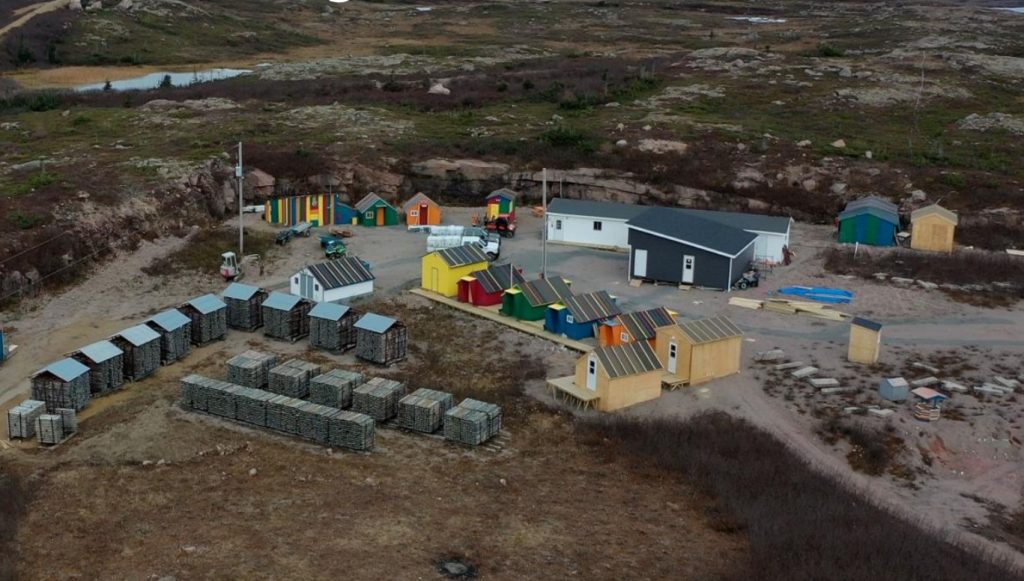Big Ridge Gold outlines 2024 Hope Brook Work Program, Newfoundland

Big Ridge Gold Corp. [TSXV-BRAU; OTCQB-ALVLF] reported its 2024 work program for the Hope Brook Gold Project located on the southwest coast of Newfoundland and Labrador. The program will follow up on the results of the successful 2023 geophysical program in preparation for future drilling, completion of environmental baseline work initiated by the previous operator and additional ore sorting studies of Hope Brook ore.
Highlights: Mobilize team in mid-July; complete Environmental baseline work; continue Hope Brook ore sorting study; reconnaissance work to develop drill program on newly defined extensions to Main & 240 Zones; advance Hope Brook toward Preliminary Economic Assessment and prepare Project Registration.
Michael Bandrowski, President & CEO, commented: “We are excited to be heading back to Hope Brook to complete another phase of work to prepare for future drilling at the Main Zone and 240 Zone deposits and their potential extension to the southwest. We believe there is tremendous resource growth potential at Hope Brook and look forward to reviewing potential development scenarios that Newfoundland and Labrador presents.”
Environmental survey work was begun by Castillian Resources Inc. and successor Coastal Resources Inc. in 2010 with a view to compiling information to fulfill the requirements for an application for Project Registration of the Hope Brook Gold Project as required under environmental regulation in Newfoundland and Labrador. The study includes evaluation of the natural environment surrounding the former mine and its current condition as a brownfield mine site. Work in 2024 will continue to build on this required information. Newfoundland-based Fracflow Consultants Inc. will undertake the field work and studies.
In the second half of 2024 Big Ridge will conduct ore sorting tests to establish whether ‘zero grade’ lithologies within the HBGP mineral resource wireframes can be separated from mineralized lithologies. These tests will be conducted by the Saskatchewan Research Council (SRC).
Zero grade lithologies are comprised of post-mineralization mafic and intermediate dykes and sills which intrude the mineralized host rocks. In 2013, a preliminary X-Ray Transmission test of HBGP rocks suggested separation of non-mineralized rock was possible.
Available core from the project’s 198 available drill holes has been selected, representing various grade and alteration characteristics of the deposit along with associated intervals of mafic and intermediate intrusive. Zero grade material in core accounts for 20-25% of material in the Hope Brook deposit wire frames. Many intrusive units intersected by drill holes in the wireframes may be too small to be excluded during mining. Two tests are planned; a success-based dynamic test of approximately 150 kg of sample and positive dynamic test results selectively removing mafic and intermediate dyke rocks will promote a performance test using approximately one tonne of mineralized material to be conducted in conjunction with advanced metallurgical testing.
In addition to the ore sorting test SRC will conduct a gold deportment study on selected mineralized samples to assess distribution of gold and other metallic elements and their inter-relationships, including copper, a positive economic component of the mineralization.
During 2024 field operations, Big Ridge staff will follow-up on the results and interpretations developed from the 2023 DC Induced Polarization, magnetometer, and reconnaissance sampling surveys, with a focus on a 5-km section of the Cinq Cerfs Deformation Zone, extending from the 240 Zone to the southwest. The work will assist with placement of drill holes for a new campaign in 2025. The team will also investigate a suite of anomalous gold-in-rock results, located south of the Cinq Cerfs Deformation Zone also identified in 2023.
The Hope Brook Gold Project is an advanced stage, high-grade gold project that produced 752,162 ounces of gold from 1987 – 1997. Initial production consisted of an open pit before moving to underground mining. Hope Brook operated using both heap leach (1987 -1990) and conventional cyanidation milling methods (1989-1997) with a later inclusion of flotation concentration to recover copper (1991).
Hope Brook hosts an Indicated gold resource totalling 16,190,000 tonnes grading 2.32 g/t gold for 1.2 million ounces and Inferred resources totalling 2,215,000 tonnes grading 3.25 g/t gold for 231,000 ounces based on a 0.4 and 2.0 g/t cut-off grades for open pit and underground resources respectively using a long-term gold price of US$1,750/oz.
Hope Brook is located 85 km east of Port aux Basques, Newfoundland. The project has well maintained infrastructure on site, including an operational 28-person camp, an 1,100-metre airstrip, ice-free docking facility and importantly, connection to the provincial electrical power grid via an on-site substation.
Big Ridge owns a 100% interest in the prospective Oxford Gold Project in Manitoba and the Destiny Gold Project in Quebec. Big Ridge is the operator of the Hope Brook Gold Project in Newfoundland and Labrador. The company currently owns 51% of the Hope Brook Gold Project and has an option to earn up to 80% by June 2026.
